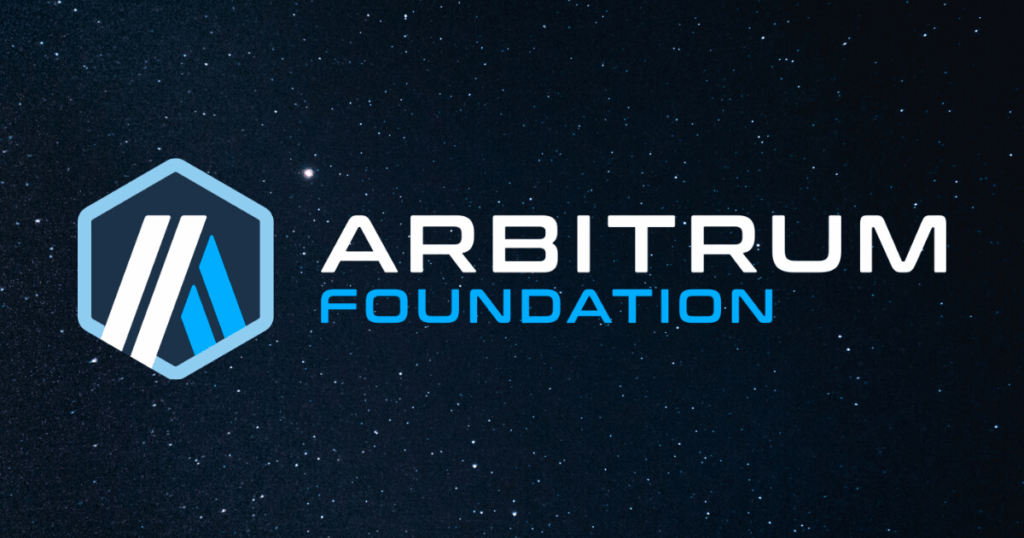
Arbitrum (ticker: ARB) is a high-potential crypto asset at the heart of one of the fastest-growing and most technologically advanced Layer-2 ecosystems built on Ethereum. Developed by Offchain Labs, the project addresses Ethereum’s major limitations—high transaction costs and limited throughput—by implementing an optimistic rollup architecture. This enables Arbitrum to deliver high performance, low fees, and full EVM compatibility, all while maintaining the reliability and decentralization of Ethereum’s base layer.
Since its launch in 2021, Arbitrum has rapidly emerged as a Layer-2 leader, boasting the highest Total Value Locked (TVL) among L2 networks, supporting top-tier DeFi protocols, and demonstrating strong momentum in both user and developer activity. The launch of the native ARB token and the establishment of the Arbitrum DAO laid the groundwork for decentralized governance and strategic ecosystem incentives.
As of 2025, amid rising interest in scalable Web3 infrastructure, a favorable regulatory climate in the U.S., and a continuing crypto bull market, Arbitrum is widely viewed by investors as one of the most reliable and forward-looking projects of the current cycle. Its DAO-governed architecture, support for Layer-3 innovations, and deeply integrated ecosystem position ARB as a key asset for medium- to long-term Ethereum exposure.
Project Overview
Arbitrum is a highly scalable Layer-2 solution built on Ethereum, designed to address the core bottlenecks of the main chain: high fees and limited throughput. Its architecture is based on optimistic rollup technology, which processes transactions off-chain and posts aggregated data back to Ethereum. This approach maintains Ethereum-grade security while significantly reducing transaction costs.
The project is developed by Offchain Labs, a team of researchers and engineers from Princeton. Since the network’s launch in 2021, it has quickly gained traction as a reliable, high-performance L2 platform. Arbitrum consists of two main components:
- Arbitrum One: The primary network focused on DeFi, DAOs, and infrastructure applications.
- Arbitrum Nova: A specialized chain for gaming and social dApps, offering ultra-low fees and high throughput.
Currently, Arbitrum leads all Layer-2 ecosystems in Total Value Locked (TVL). It continues to attract major decentralized applications, including GMX, Radiant Capital, Aave, Uniswap, Stargate, and many others. The 2023 launch of the ARB token and the formation of the Arbitrum DAO enabled a decentralized governance model, with the community steering development priorities and grant funding.
In this way, Arbitrum is more than just a technological layer on top of Ethereum—it serves as a next-generation Web3 infrastructure foundation, powering Layer-3 protocols, cross-chain connectivity, and a robust DAO-driven economic framework.
Technology and Architecture
Arbitrum is built on optimistic rollup technology—a Layer-2 scaling mechanism where transactions are processed off the Ethereum mainnet and then posted in aggregate to the base layer. This preserves Ethereum’s security while dramatically increasing throughput and lowering fees.
A core infrastructure component is Arbitrum Nitro, introduced in 2022. Nitro is a comprehensive upgrade to the platform, featuring its own compiler, WebAssembly support, and a modular execution framework. It enables:
- Significantly lower transaction costs (up to 10x cheaper than Ethereum)
- Increased network throughput (theoretically up to 40,000 TPS)
- Compatibility with popular programming languages, including Solidity and WASM
One of the most promising developments is Arbitrum Orbit, a framework for building custom Layer-3 chains that inherit Nitro’s security and performance while allowing for custom logic and economic models. Orbit is already being adopted by startups launching app-chain solutions and multichain dApps.
The Arbitrum Stylus project extends developer capabilities by allowing smart contract development in Rust, C, and C++. This opens the platform to Web2 developers and enterprises seeking to adapt blockchain technology using existing software infrastructure.
Integration with EigenLayer (restaking) introduces new monetization opportunities, allowing users to restake ARB and other assets to secure decentralized services. This adds not just governance but also yield-generating utility to ARB.
In summary, Arbitrum’s architecture goes beyond Ethereum scaling—it lays the groundwork for nested Web3 ecosystems. Horizontal scaling through Orbit, multi-language support via Stylus, and financial expansion via restaking contribute to both network and token growth potential.
Team and Investors
Arbitrum was founded in 2018 by a team of Princeton-trained experts in cryptography, computer science, and digital public policy. It is developed and managed by Offchain Labs, a private tech company focused on scaling solutions for Ethereum.
Key Team Members:
- Steven Goldfeder (CEO): Co-founder of Offchain Labs, PhD in cryptography from Princeton, author of academic research on blockchain and security. Leads strategic development and institutional partnerships.
- Harry Kalodner (CTO): Co-founder and technical director, expert in distributed systems and anonymous cryptocurrencies. Co-architect of the Nitro core and rollup mechanism.
- Ed Felten (Chief Scientist): Princeton professor and former U.S. Deputy CTO under the Obama administration. Renowned for his work on digital ethics and public IT governance.
This team combines academic rigor, engineering expertise, and policy experience—crucial for scaling Web3 infrastructure under increasing global regulatory scrutiny.
Funding Rounds:
- Seed (2020): ~$3.8M from Coinbase Ventures, Pantera, Compound
- Series A (2021): ~$20M from Lightspeed, Pantera
- Series B (2021): $120M led by a16z, Paradigm, Alameda
- Pre-token valuation (2023): $1.2 billion
Tokenomics and Economic Design
The ARB token plays a central role in Arbitrum’s governance and ecosystem strategy. It functions as the governance instrument of the Arbitrum DAO, participates in resource allocation, funds new initiatives, and may soon support staking and restaking mechanics.
- Ticker: ARB
- Maximum Supply: 10 billion ARB
- Circulating Supply: ~2.6 billion ARB
Token Allocation:
- DAO Treasury: 42.78% (for grants, ecosystem growth, and community initiatives)
- Team & Advisors: 26.94% (vesting through 2027)
- Investors: 17.53% (a16z, Paradigm, Pantera among key backers)
- Airdrop: 11.62% (over 600,000 addresses received ARB in the initial distribution)
ARB’s tokenomics focus on long-term sustainability and decentralized capital deployment. The DAO has full control over the treasury, including funding L3 networks via Orbit, liquidity incentives, and developer grants.
Team and investor tokens unlock gradually with monthly limits, helping prevent short-term price shocks. A large portion of ARB is held in the DAO treasury, giving the community meaningful control over the project’s economic direction.
In 2025, discussions are underway to introduce staking and restaking via EigenLayer, adding new utility and encouraging liquidity retention within the ecosystem.
Overall, Arbitrum’s tokenomics reflect managed inflation, decentralized capital allocation, and strategic ecosystem development. Its token distribution is among the most balanced in the sector, with the DAO treasury holding over 42% of the supply. Gradual vesting minimizes inflation risk and market pressure. This model has received positive feedback from DeFi analysts and institutional funds, highlighting the maturity of Arbitrum’s economic architecture. ARB is evolving from a governance token into a critical financial asset underpinning Layer-2 and Layer-3 scalability.
Key Metrics and Market Demand
- Price (July 2025): ~$0.78
- Market Cap: ~$2.1 billion
- Fully Diluted Valuation (FDV): ~$7.8 billion
- Total Value Locked (TVL): $18.2 billion (DefiLlama)
- Average Daily Trading Volume: >$500 million
- Top DEXs: Uniswap, SushiSwap, Camelot, Trader Joe
Arbitrum continues to lead the Layer-2 space in total TVL, ahead of competitors like Optimism, zkSync, and Base. Its growing TVL reflects both institutional confidence and expanding user participation across the ecosystem.
The number of active addresses on Arbitrum consistently exceeds 1 million per month, demonstrating strong network activity and user engagement. It ranks among the top 5 blockchains for transaction volume and DeFi interactions.
Drivers of Demand:
- High liquidity in key protocols such as GMX, Radiant, Stargate, Pendle, and Gains Network, all with solid user bases and substantial TVL
- DAO-led grant programs that actively fund promising new projects
- Integration with major centralized exchanges (CEXs), including Binance and Coinbase, enabling seamless ARB and ETH transfers on Arbitrum
Arbitrum’s fundamentals showcase its maturity as an investment-grade asset — strong liquidity, a growing user base, high transaction throughput, and ongoing developer activity make ARB attractive to both retail and institutional investors.
Adoption and Real-World Use Cases
Arbitrum sees widespread application across DeFi and broader Web3 verticals. Its high scalability and low fees have made it a cornerstone for major decentralized protocols:
- DeFi: Leading protocols including GMX, Aave, Uniswap, Radiant, and Curve use Arbitrum as a primary Layer-2 platform, collectively securing billions in TVL. GMX, in particular, has become the top decentralized exchange by trading volume on any L2.
- NFTs and Gaming: Arbitrum Nova powers gaming and social dApps such as Treasure DAO, offering high throughput and ultra-low fees.
- DAOs and Governance: Arbitrum DAO is one of the largest on-chain organizations by treasury size, funding infrastructure and user initiatives while driving key economic strategies via governance votes.
- Web3 Infrastructure: Deep integrations with tools like MetaMask, Coinbase Wallet, Chainlink, The Graph, and Gelato ensure wide accessibility for developers and end users.
- Enterprise and Custom L3 Networks: Arbitrum Orbit provides the infrastructure for building enterprise-grade L3 chains, allowing businesses to customize logic, security, and scalability parameters.
As such, Arbitrum is evolving beyond DeFi into a comprehensive Web3 hub with applications across gaming, enterprise, DAO ecosystems, and user interfaces.
Regulatory Risks and Competition
Regulatory concerns remain a significant risk for all crypto assets, including Arbitrum. While the SEC and other U.S. agencies have not classified ARB as a security, future legislation could change its status.
The primary regulatory focus lies not on ARB itself, but on the DAO structure. Some jurisdictions may treat DAOs as unregistered investment vehicles or cooperatives, leading to tax and compliance implications.
Competitive Landscape:
- Optimism: A similar optimistic rollup-based L2 but with lower TVL and activity
- zkSync Era and Scroll: zk-rollup platforms offering higher security and faster finality but still lagging Arbitrum in ecosystem maturity
- Base (by Coinbase): Targeting mass adoption but remains centralized and less innovation-driven
Arbitrum’s strengths include its technological flexibility (Orbit, Stylus), mature ecosystem, robust DAO infrastructure, and high developer trust. However, growing competition in the L2 space and increasing regulatory pressure demand ongoing adaptation and legal resilience.
SWOT Analysis
Strengths:
- Leader in L2 TVL and active user count
- Backing from major DeFi protocols and a rapidly growing ecosystem
- Strong DAO infrastructure and transparent governance
- Innovative architecture (Orbit, Stylus) and access to L3 networks
Weaknesses:
- Token concentration among early investors and team members
- Price pressure during token unlock periods
- ARB lacks mandatory utility in base transactions and consensus
Opportunities:
- Expansion of enterprise L3 solutions via Orbit
- Attracting Web2 developers through Stylus and WASM support
- Integration with restaking infrastructure via EigenLayer
- Introduction of new token utilities (staking, fee burn)
Threats:
- Heightened DAO and token regulation in the U.S. and EU
- Rising competition from zk-rollups and centralized L2s
- Slower-than-expected Orbit adoption in enterprise sectors
- Regulatory risks in both U.S. and European jurisdictions
- Competitive pressure from Polygon CDK, zkSync
Investment Potential and Key Takeaways
Arbitrum is an Ethereum-scale infrastructure project distinguished by its maturity, scalability, and technological agility. Its key strengths lie in its sustained leadership among Layer-2 networks, a deep and growing ecosystem of DeFi and dApps, and a transparent, actively governed DAO. Institutional backing from top-tier funds such as a16z, Pantera, Lightspeed, and Paradigm further reinforces the project’s credibility.
ARB’s investment appeal is enhanced by:
- A bullish market and growing interest in Web3 infrastructure
- Rising demand for custom Layer-3 networks via Orbit
- Rollout of Stylus, expanding the developer base
- Increasing utility of ARB through restaking and future staking mechanisms
- Proactive DAO-driven grant programs and ecosystem incentives
Combined with moderate inflation, a well-structured token distribution model, and a strong community, Arbitrum is well-positioned to maintain and strengthen its role in the long-term. ARB is viewed as a high-potential capitalization asset and one of the most resilient plays within the Layer-2 segment.
Price Forecast
Arbitrum is entering a phase of mature growth, and its future valuation will depend on a mix of macroeconomic, technological, and network factors. Considering the trends of 2025—including the return of a bull market, growing Web3 capitalization, and deregulatory support from the U.S. administration under Trump and a Republican-led Congress—conditions are highly favorable for Layer-2 networks.
- Short Term (2025): $1.95–4.20, driven by DAO activity, rising TVL, and continued Orbit initiatives
- Mid Term (2026–2027): $4.20–7.50, with full rollout of Stylus, L3 networks, and integrations with EigenLayer
- Long Term (2030): $13.50–16.00, assuming Arbitrum captures 10–15% of Ethereum’s total DeFi TVL and achieves wide adoption of enterprise networks and Web3 infrastructure
Alternate Scenario:
- Mid Term (2026–2027): $1.50–5.20 with Stylus and new L3 chains fully operational
- Long Term (2030): $13–15, assuming Arbitrum’s DeFi TVL surpasses $50B amid corporate network adoption
Conclusion
Arbitrum is no longer just a Layer-2 solution — it has evolved into a foundational layer for scaling Ethereum and deploying Web3 at both institutional and user levels. The project displays maturity, adaptability, and resilience: built on robust architecture, governed by a transparent DAO, with strong liquidity inflows and developer engagement.
Against the backdrop of favorable macroeconomic and political trends—including deregulatory sentiment in the U.S. and a return of capital to crypto—Arbitrum stands uniquely positioned for exponential growth. Expansion of Layer-3 networks, the rollout of Stylus, integration with EigenLayer, and solid institutional support provide a strong foundation for sustained demand for ARB.
For investors focused on fundamental Web3 infrastructure, ARB should be considered a core portfolio asset. Its strong tokenomics, grant-driven ecosystem, rising TVL, and decentralized governance framework position Arbitrum as one of the defining assets of the next technological cycle. Anyone seeking long-term Ethereum exposure cannot overlook this project.


